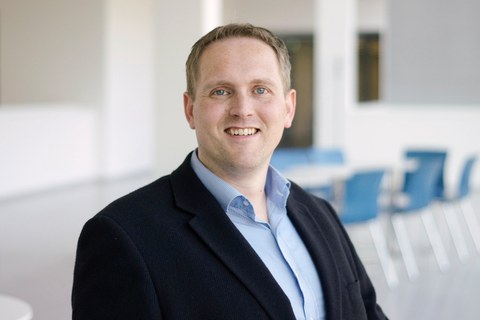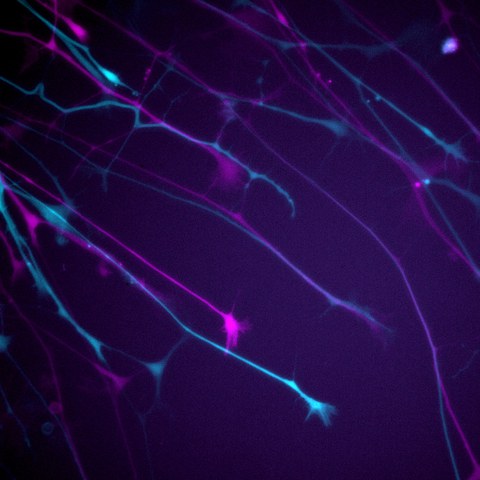Oct 04, 2018
Decoding the regulation of cell survival - A major step towards preventing neurons from dying

Dr. Volker Busskamp
An interdisciplinary and international research group led by Dr. Volker Busskamp from the Center for Regenerative Therapies Dresden at the TU Dresden (CRTD) has decoded the regulatory impact on neuronal survival of a small non-coding RNA molecule, so-called miRNA, at the highest resolution to date. This deciphering of gene regulation primes applications for strengthening neurons in order to protect them from neurodegenerative diseases. The extensive systems biology methods used here could become a new standard for the way miRNAs are researched.
miRNAs were first discovered 25 years ago, but understanding their impact on gene regulation of messenger RNAs (mRNAs) is still incomplete. While computer-based studies predict the maximum range of miRNA interactions, some of which can bind thousands of mRNAs, experimental studies usually provide only one or very few. The research team discovered that, contrary to previous assumptions, brain-enriched miRNA (miR-124) is unnecessary during neuronal differentiation from adult human stem cells, but has a huge effect on neuronal survival.

Neurite outgrowth assay of neurons expressing GFP. The first and last time point (0 min, 50 min) are pseudocolored in magenta and cyan, respectively.
The team combined both experimental and computational approaches and performed an in-depth system level analysis of miR-124. They found 98 miR-124 targeted genes that are simultaneously regulated. Many of these controlled genes had direct physiological functions, in particular protecting neurons from dying. The research group used a novel computational approach to also investigate indirect effects, namely the miR-124 targeted genes that themselves are regulators of gene expression.
“Our deep mechanistic insights may lead to biomedical applications enabling the protection of neurons against degeneration. In addition, previously uncharacterised genes in the regulatory networks could be investigated and new functions assigned to them”, says Volker Busskamp. The interdisciplinary approach of experimental manipulation and sophisticated bioinformatic analysis sets new standards in the miRNA gene regulation research.
Professor Katja Nowick (FU Berlin, Germany), Professor Johan Jakobsson (University of Lund, Sweden), Professor Peter F. Stadler (University of Leipzig, Germany) and Dr. Volker Busskamp (TU Dresden, Germany) and corresponding laboratory members contributed to this international and interdisciplinary project.
Original publication
“Combined experimental and system-level analyses reveal the complex regulatory network of miR-124 during human neurogenesis”, Cell Systems DOI: 10.1016/j.cels.2018.08.011 https://www.cell.com/cell-systems/fulltext/S2405-4712(18)30358-2
Website of Dr. Busskamp
http://www.crt-dresden.de/research/research-groups/core-groups/crtd-core-groups/neuronal-cell-types-and-circuit-engineering/
Volker Busskamp is a Freigeist-Fellow of the Volkswagen Foundation and an ERC starting grant investigator.
Media inquiries:
Dr. Anka Kempe.
Tel.: +49 351 458 82060
Founded in 2006, the DFG Research Center for Regenerative Therapies Dresden (CRTD), Cluster of Excellence at the TU Dresden has passed the second phase of the Excellence Initiative, which aims to promote top-level research and improve the quality of German universities and research institutions. The goal of the CRTD is to explore the human body's regenerative potential and to develop completely new, regenerative therapies for hitherto incurable diseases. The key areas of research include haematology and immunology, diabetes, neurodegenerative diseases, and bone regeneration. At present, eight professors and twelve group leaders are working at the CRTD – integrated into an interdisciplinary network of 87 members at seven different institutions within Dresden. In addition, 21 partners from industry are supporting the network. The synergies in the network allow for a fast translation of results from basic research to clinical applications. The CRTD is part of the Center for Molecular and Cellular Bioengineering (CMCB).
